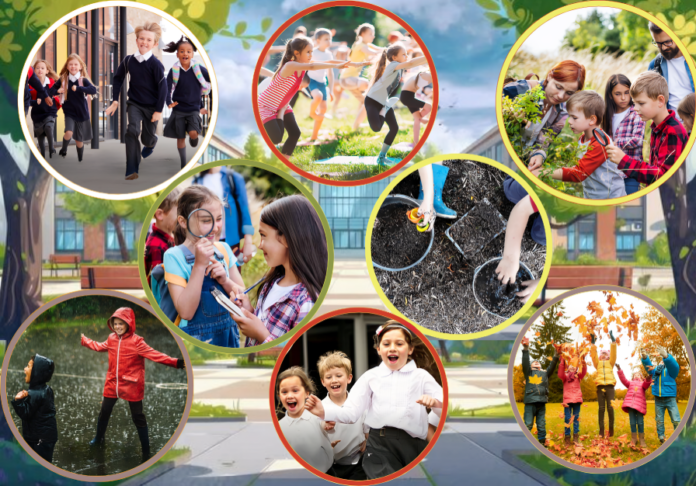Outdoor Learning Activities for Students offer an exceptional way to foster curiosity, creativity, and critical thinking. By stepping outside traditional classroom walls, educators can create immersive experiences that not only enhance academic skills but also promote social interaction, physical health, and emotional well-being. This article explores a variety of inspiring outdoor learning activities designed to captivate students’ inquisitive minds and encourage them to explore the world around them.
Benefits of Outdoor Learning
Before diving into specific activities, it’s essential to understand the myriad benefits that outdoor learning provides. Engaging in outdoor activities can lead to:
- Enhanced Academic Performance: Studies show that students who participate in outdoor learning often achieve better academic results.
- Improved Physical Health: Outdoor activities encourage movement, promoting fitness and overall well-being.
- Increased Social Skills: Collaborative outdoor activities enhance communication and teamwork.
- Boosted Creativity: Nature often serves as a catalyst for innovative thinking and problem-solving.
By embracing Outdoor Learning Activities for Students, educators can tap into these benefits while making learning fun and engaging.
Discover Outdoor Learning Activities for Students

1. Nature Walks and Scavenger Hunts
Nature Walks
Nature walks are a simple yet effective way to get students outdoors. During these walks, students can observe their environment, noting changes in seasons, plant life, and animal behavior.
Educators can enhance these walks by setting specific objectives, such as identifying different species or understanding local ecosystems. This experience not only enriches students’ knowledge of biology and ecology but also encourages mindfulness and appreciation for nature.
Scavenger Hunts
Scavenger hunts add an element of excitement and teamwork to nature walks. Teachers can create themed lists of items for students to find, blending fun with learning. For instance, students might search for various types of leaves or track animal footprints. This engaging activity fosters curiosity while enhancing observational and problem-solving skills.
2. Outdoor Science Experiments
Bringing science lessons outdoors can significantly enhance student engagement and comprehension.
Weather Observation Stations
Setting up weather observation stations is an excellent way for students to learn about meteorology. Students can measure temperature, wind speed, and rainfall using simple tools. Over time, they can collect data and analyze weather patterns, developing critical thinking and analytical skills.
Plant Growth Experiments
Conducting experiments on plant growth allows students to explore the scientific method hands-on. By manipulating variables such as sunlight, water, and soil conditions, students can observe how these factors affect plant development. This activity not only teaches botanical concepts but also reinforces the importance of experimentation in science.
3. Creative Arts in Nature
Nature serves as an inspiring backdrop for creative expression.
Nature Art Projects
Students can harness their creativity by using natural materials to create art. Projects can range from leaf rubbings to rock sculptures. This hands-on approach fosters creativity while encouraging students to connect with their environment.
Outdoor Performance Arts
The outdoors can serve as a vibrant stage for performing arts. Students can engage in skits, poetry readings, or musical performances, using nature as a captivating backdrop. This setting enhances their presentations and boosts confidence in public speaking.
4. Environmental Education and Conservation Projects
Incorporating environmental education into outdoor learning helps cultivate a sense of responsibility for the planet.
Community Clean-Up Days
Organizing clean-up events allows students to actively contribute to their community while learning about environmental stewardship. By collecting litter in local parks or waterways, they experience firsthand the effects of pollution and understand the importance of maintaining a clean environment.
Gardening and Sustainable Practices
Establishing a school garden can provide invaluable lessons about agriculture, ecology, and sustainability. Students can participate in planting, maintaining, and harvesting crops, gaining insights into food production and healthy eating habits. Additionally, lessons on composting and recycling can reinforce the importance of environmental conservation.
5. Team-Building Activities
Outdoor learning activities also serve as excellent opportunities for team-building and social development.
Trust-Building Exercises
Activities such as trust falls or blindfolded obstacle courses can help students develop trust and camaraderie. These exercises encourage reliance on one another, building strong interpersonal relationships essential for collaboration.
Group Challenges
Group challenges like obstacle courses or team sports promote healthy competition and teamwork. Students learn to strategize, communicate effectively, and support each other, enhancing their social skills while enjoying physical activity.
The Impact of Outdoor Learning Activities for Students
Integrating Outdoor Learning Activities for Students into educational programs yields numerous benefits. Research indicates that outdoor learning can:
- Improve academic performance across various subjects.
- Enhance creativity and problem-solving abilities.
- Promote physical health and emotional well-being.
By engaging with their surroundings, students are more likely to retain information and apply it to real-world situations. Outdoor learning experiences also help reduce stress and anxiety, improving overall motivation and mood.
Incorporating Outdoor Learning Activities for Students into educational curricula offers countless benefits that extend beyond traditional classroom instruction. From nature walks and scavenger hunts to creative arts and environmental education, these activities inspire curiosity and encourage exploration of the world.
Educators must recognize the immense value of outdoor learning and actively integrate these experiences into their teaching methods. By doing so, we can nurture the next generation of curious minds, equipped with the skills and knowledge to thrive in an ever-changing world.
Impact of Social Media on Teen Health
Lydia Bach, a 15-year-old sophomore from New York City, emphasizes the significant role of social media in teen burnout. She urges adults to recognize the pressures teens face, including gun violence, global conflicts, and climate change.
Social media amplifies these stressors, fostering unrealistic comparisons. To support teens, adults should help set healthy boundaries and encourage offline activities to alleviate the burden of burnout.


